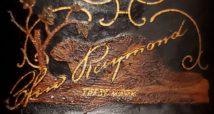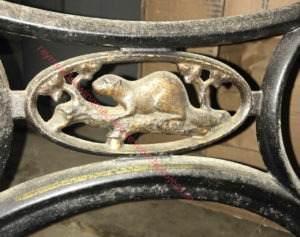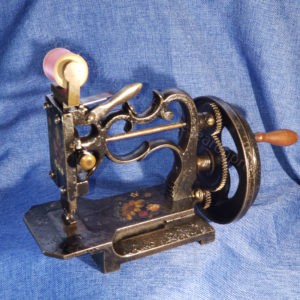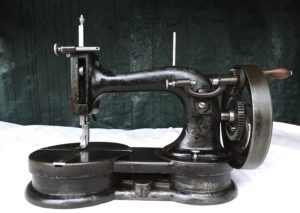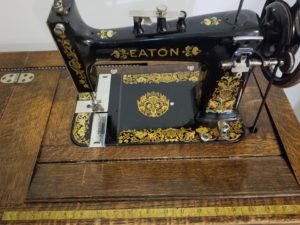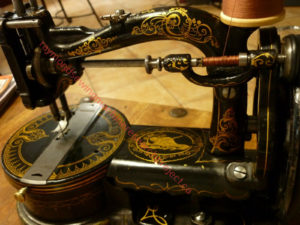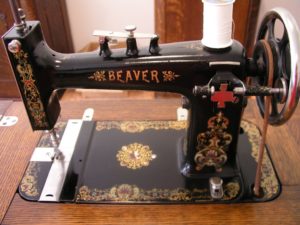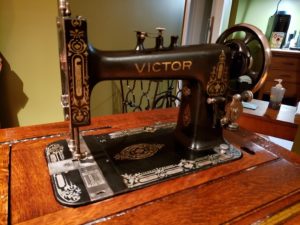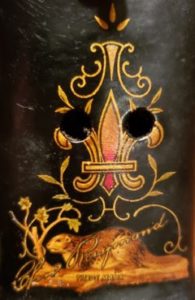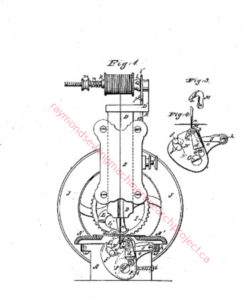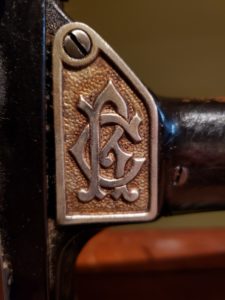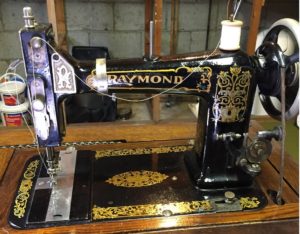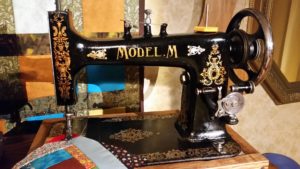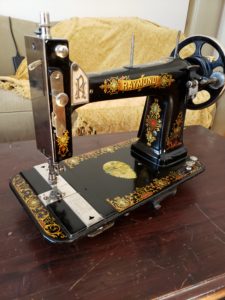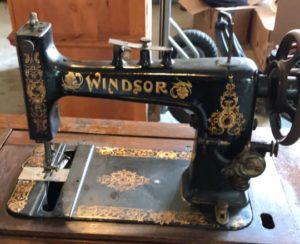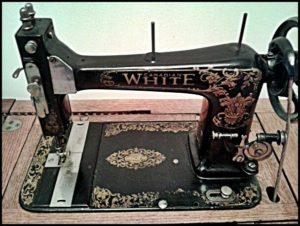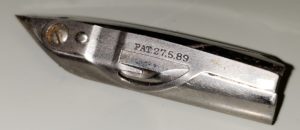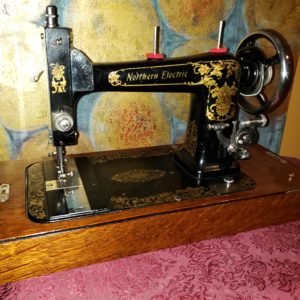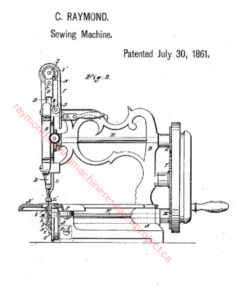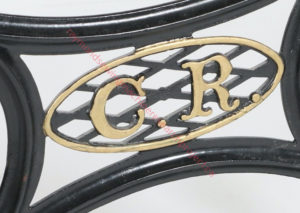Raymond Sewing Machine of Guelph, Ontario: Manufacturing history
History of the Raymond Sewing Machine
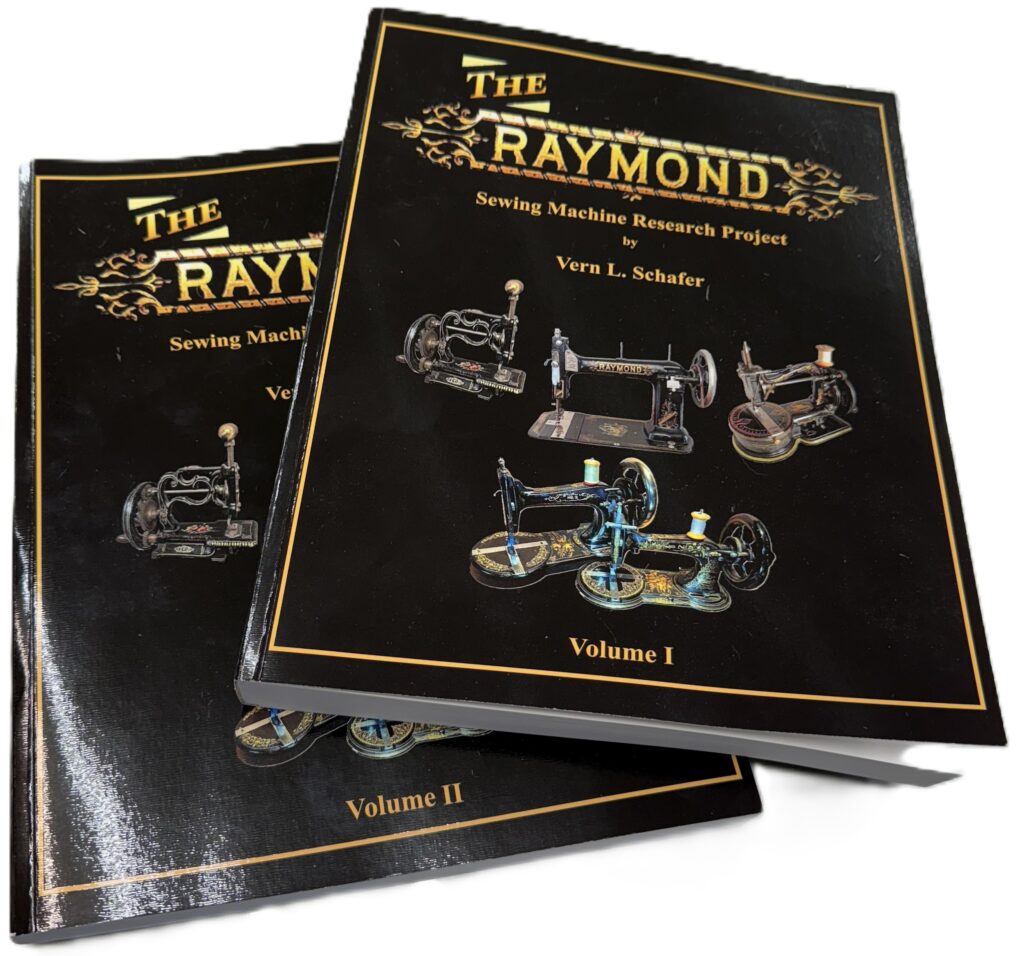
Welcome to Charles Raymond Sewing Machine; history & research.
November 27, 2025 – Notice – Now available for 2025- “The Raymond Sewing Machine Research Project”, book, a 560-page, two-volume set. See Above. Check my Facebook blog for ordering details.
Charles Raymond Sewing Machine Research Project. Welcome to a unique research project to record the history of Charles Raymond sewing machines. Research for all Raymond machines is on-going and, records may change daily. First, I provide a basic overview of Raymond’s sewing machine production history. Next, you will find a link to a credible bio and then a look at the factory circa 1900. Finally and, most importantly, I offer my help to identify your Raymond sewing machine.
In brief, American inventor Charles Raymond’s first sewing machine halted in 1852 when Isaac Singer obtained a similar patent ahead of Charles. Next, Raymond found success by 1857 with partner Wilford H Nettleton in Vermont. Again, pressure from the US sewing combine did not stop despite legally held patents. As a result, by 1860, Raymond chose Canada to re start production and continue exporting worldwide.
A New Beginning.
Canada provided Raymond a chance, at least, to produce his in-demand sewing machine. The New England design indeed filled a market gap. By this time, Chas Raymond and his patent date appear on his 1860s and 1870s machines. In fact, Raymond’s early advertisements urged that, without his name, no others were genuine.
Then, by the 1870s, a new family of transverse shuttle lock stitch machines appear. This is a series of four similar appearing machines, but, each one larger than the last model. Raymond aptly named his first model “Lock Stitch” but without the label. The first Lock Stitch, for instance, is notably, the smallest. Next, labels No 1, No 2, and No3 appears on later models. Meanwhile, Raymond’s continued offering his 1860’s chain stitch well into the 1880s. In short, despite trends favoring a lock stitch, Raymond had a market for his chain stitch for 25 years.
Raymond Sewing Machine development was just getting started.
In early 1870s again, Raymond introduces another lock stitch called Household. And, is yet completely different from the No 1, 2, 3 family. The Household is not always labeled and its French clone is confusing for some. This model stitches via a vibrating shuttle driver. Again, differing from the other lock stitch family. The Household model, a hand crank, can be found in a treadle table. A treadle is undoubtedly rare as few examples are found today. Raymond’s company advertising did not offer a Household treadle option, therefore, being a dealer option only is likely.
Next, in the 1880’s, Raymond evolved his vibrating shuttle lock stitch “High Arm” product line-up. Economic conditions knocked off Raymond’s Canadian competition by the end of that decade. Chas Raymond persisted with improvements to the High Arm model into the 1890’s. This decade saw a corporate restructuring plus Raymond’s retirement in 1897. Charles Raymond was truly successful in the sewing machine game.
Despite retirement, however, new management carried Charles Raymond Sewing production 25 more years. By 1900, a low cost model and No 12 rotary for tailors was added next. Different owners and investors ran the business but soon, White Sewing Company, Ohio bought the firm in 1916. More labels appear and White’s current machines were also made in Guelph. But finally, Raymond ceased forever when White S.M. CO closed out in 1922.
Raymond Sewing Machine of the 21rst century- research and documentation.
Research progress happens almost daily. A notably important find includes Raymond’s No 12 Rotary tailor machine. The No 12 was seemingly lost forever until December 2020. But, despite this, Raymond’s model No 3 remains elusive still. If you think you might have a Raymond No 3 sewing machine, I am certainly eager to chat with you. Please drop me a line.
Research for Charles Raymond Sewing machines is definitely not limited to treadle sewing models. I collect Raymond’s New England hand crank models and, as a result, know them well. Please view my Raymond New England page next.
I am available to help!!
Your search is over as I have developed this page to date, ID and provide information. If your machine has a “Raymond” label and you want to learn more about it, please email me directly.
But also, should you have dated materials like receipts, a warranty card or a manual, I would love to hear from you.
Charles Raymond Biography:
Raymond’s biography, originally written in 1880, was mid career but reflects his early achievements. Others attempt to republish, however, here is a credible source. Follow this link to learn more about Charles Raymond and his successful sewing machine manufacturing journey.
The Raymond Sewing Machine Factory, Guelph Ontario Canada:
Check out the Raymond Sewing Machine Factory in Guelph, Ontario. Fortunately, two original structures still exist today. One factory is on Yarmouth Street, and the other is on the corner of Yarmouth and Suffolk Street. These two buildings are a short distance apart and, considered one factory. Guelph’s old buildings are beautiful to see, so plan to visit if you can.
This is a circa the year 1900 postcard below. With attention to the brown building seen here on Baker Street is the cream separator factory. Sadly, it is no longer standing today. Of note, this artist’s painting is exaggerated, in size, for advertising purposes.

Summary:
My focus for this on-going research project is to record Raymond sewing machine history. With great progress made thus far, I continue as there is still much to learn. I encourage you to contact me if you have a Raymond sewing machine collection or even just one. Above all, your contribution adds valuable details to the final research project. Thank you for reaching out. Sincerely, Vern.
Finally, the Guelph Civic museum has a great archive but also a Raymond sewing machine collection. Consider visiting soon.
